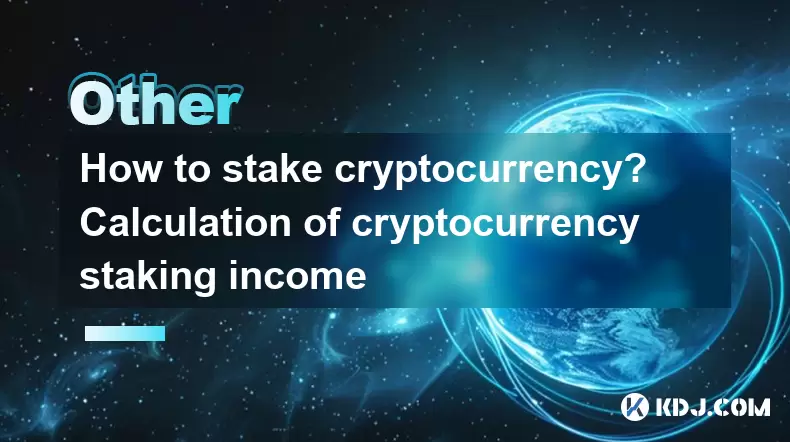-
 Bitcoin
Bitcoin $115200
-2.59% -
 Ethereum
Ethereum $3610
-4.80% -
 XRP
XRP $3.046
-1.70% -
 Tether USDt
Tether USDt $0.9997
-0.01% -
 BNB
BNB $762.6
-4.64% -
 Solana
Solana $168.7
-4.80% -
 USDC
USDC $0.9998
0.00% -
 Dogecoin
Dogecoin $0.2091
-4.05% -
 TRON
TRON $0.3270
-0.48% -
 Cardano
Cardano $0.7335
-3.72% -
 Hyperliquid
Hyperliquid $39.29
-10.55% -
 Stellar
Stellar $0.3999
-2.50% -
 Sui
Sui $3.542
-5.88% -
 Chainlink
Chainlink $16.62
-5.12% -
 Bitcoin Cash
Bitcoin Cash $551.5
-3.74% -
 Hedera
Hedera $0.2544
-3.06% -
 Avalanche
Avalanche $22.11
-4.29% -
 Ethena USDe
Ethena USDe $1.001
0.00% -
 Toncoin
Toncoin $3.523
-1.18% -
 UNUS SED LEO
UNUS SED LEO $8.939
-0.13% -
 Litecoin
Litecoin $106.3
-2.77% -
 Shiba Inu
Shiba Inu $0.00001235
-3.83% -
 Polkadot
Polkadot $3.647
-3.93% -
 Uniswap
Uniswap $9.071
-6.41% -
 Monero
Monero $301.6
-0.77% -
 Dai
Dai $0.0000
-0.01% -
 Bitget Token
Bitget Token $4.331
-3.46% -
 Pepe
Pepe $0.00001064
-5.31% -
 Cronos
Cronos $0.1367
-5.05% -
 Aave
Aave $259.2
-3.66%
How to stake cryptocurrency? Calculation of cryptocurrency staking income
Cryptocurrency staking involves locking coins in a wallet to support blockchain validation, earning rewards while helping secure networks like Ethereum or Cardano.
Jun 14, 2025 at 05:50 am

What Is Cryptocurrency Staking?
Cryptocurrency staking refers to the process of actively participating in transaction validation on a Proof-of-Stake (PoS) blockchain. Instead of using energy-intensive mining like in Proof-of-Work systems, PoS blockchains allow users to lock up or "stake" their coins to support network operations. In return for this contribution, stakers receive rewards, often in the form of additional cryptocurrency tokens.
Staking is commonly used by networks such as Ethereum 2.0, Cardano (ADA), Polkadot (DOT), and Solana (SOL). By locking your crypto assets, you help secure the network and validate transactions, which keeps the system decentralized and efficient.
How Does Staking Work?
In a Proof-of-Stake model, validators are chosen based on the number of coins they hold and are willing to stake. The more you stake, the higher your chances of being selected to validate a new block — and thus earn block rewards.
Here’s how it works:
- You lock your cryptocurrency in a wallet or through a staking service.
- Your coins contribute to securing the network.
- When you're chosen to validate a block, you receive a reward.
- If you act maliciously or fail to perform duties, you may face penalties (slashing).
Some platforms allow delegated staking, where you can delegate your coins to a validator node without running one yourself. This method is popular among small holders who don’t want to manage technical infrastructure.
Choosing a Platform for Staking
Before you begin staking, you need to select a platform or wallet that supports staking for your chosen cryptocurrency. Popular options include:
- Crypto exchanges like Binance, Coinbase, and Kraken offer staking services with user-friendly interfaces.
- Native wallets such as Ethereum’s official staking wallet, Daedalus for Cardano, or Phantom for Solana.
- Third-party staking providers like Stakehound or Everstake.
When choosing a provider, consider:
- The minimum staking amount required.
- Whether there's a lock-up period.
- The fees charged by the platform.
- The security reputation of the service.
Always ensure the platform supports non-custodial staking if you prefer to maintain full control over your private keys.
Step-by-Step Guide to Staking Cryptocurrency
If you’re ready to start staking, follow these steps carefully:
- Choose a supported cryptocurrency like ETH, ADA, DOT, or SOL.
- Set up a compatible wallet that allows staking — either a software wallet or hardware wallet.
- Transfer funds into your wallet from an exchange or another wallet.
- Select the staking option within your wallet interface or connect to a staking pool.
- Confirm the staking amount and duration (if applicable).
- Approve the transaction via your wallet to officially lock your coins.
- Monitor your rewards regularly through the wallet or platform dashboard.
Make sure not to move or transfer your staked coins during any lock-up period, as this may result in loss of rewards or penalties.
How to Calculate Staking Income
Calculating potential staking income depends on several variables, including:
- Annual Percentage Yield (APY) offered by the network or platform.
- Total amount staked.
- Network inflation rate.
- Validator performance (for delegated staking).
- Staking duration.
A basic formula to estimate earnings is:
Estimated Annual Earnings = Amount Staked × APY
For example, if you stake 100 ETH at an APY of 4%, your estimated annual reward would be 4 ETH.
However, actual returns may vary due to fluctuating network conditions, slashing risks, and compounding effects if rewards are automatically reinvested.
Some platforms provide staking calculators where you can input your amount and time to get more precise estimates. Always check whether the APY is nominal or effective, as some platforms advertise gross returns before fees or penalties.
Frequently Asked Questions (FAQs)
Q: Can I unstake my cryptocurrency anytime?
A: It depends on the network and platform. Some blockchains have mandatory lock-up periods, while others allow unstaking with a delay. For instance, Ethereum requires a waiting period after initiating unstaking.
Q: Are staking rewards taxed?
A: Yes, in many jurisdictions, staking rewards are considered taxable income at the time they are received. Consult a tax professional or use crypto tax tools to report accurately.
Q: What happens if a validator misbehaves?
A: If a validator acts dishonestly or fails to stay online, a portion of its staked coins — and possibly those of its delegators — may be slashed as a penalty.
Q: Is staking safer than trading?
A: Staking generally involves lower risk compared to active trading, but it still carries risks such as price volatility, slashing, and platform security issues. Always assess your risk tolerance before staking.
Disclaimer:info@kdj.com
The information provided is not trading advice. kdj.com does not assume any responsibility for any investments made based on the information provided in this article. Cryptocurrencies are highly volatile and it is highly recommended that you invest with caution after thorough research!
If you believe that the content used on this website infringes your copyright, please contact us immediately (info@kdj.com) and we will delete it promptly.
- SPX6900, BlockDAG, and Miner Sales: A New York Minute on Crypto Trends
- 2025-08-01 23:30:15
- BlackRock, XRP ETF, and Ripple: Is the Perfect Storm Brewing?
- 2025-08-01 22:50:11
- Dogecoin's Bullish Engulfing Pattern: Is a Major Price Move Imminent?
- 2025-08-01 22:30:12
- Score Big with bet365 Bonus Code BOOKIES: Your Ticket to NFL, MLB, and WNBA Action!
- 2025-08-01 22:30:12
- SportsMillions Promo Code & Bonus: Your Ticket to Social Sports Action
- 2025-08-01 22:50:11
- BetMGM Bonus Code BOOKIES: Your Ticket to NFL, MLB & WNBA Action (and More!)
- 2025-08-01 22:55:54
Related knowledge

What is the difference between a blockchain and a database?
Aug 01,2025 at 09:36pm
Understanding the Core Structure of a BlockchainA blockchain is a decentralized digital ledger that records data in a series of immutable blocks linke...

How to start a business using blockchain?
Jul 28,2025 at 12:36am
Understanding the Basics of Blockchain TechnologyBefore diving into the process of starting a business using blockchain, it's crucial to understand wh...

What is a token on the blockchain?
Jul 21,2025 at 07:00am
Understanding the Concept of a TokenIn the realm of blockchain technology, a token is a digital representation of an asset or utility that exists on a...

Can blockchain be used for identity verification?
Jul 18,2025 at 02:14pm
Understanding Identity Verification in the Digital AgeIn the modern digital landscape, identity verification has become a critical component for ensur...

What is a consensus mechanism in blockchain?
Jul 21,2025 at 03:01am
Understanding the Basics of Consensus MechanismsA consensus mechanism is a critical component of any blockchain network. It refers to the process by w...

How to explain blockchain to someone with no tech background?
Jul 18,2025 at 11:08pm
Understanding the Basics of BlockchainTo explain blockchain to someone with no tech background, it's essential to start with simple analogies and avoi...

What is the difference between a blockchain and a database?
Aug 01,2025 at 09:36pm
Understanding the Core Structure of a BlockchainA blockchain is a decentralized digital ledger that records data in a series of immutable blocks linke...

How to start a business using blockchain?
Jul 28,2025 at 12:36am
Understanding the Basics of Blockchain TechnologyBefore diving into the process of starting a business using blockchain, it's crucial to understand wh...

What is a token on the blockchain?
Jul 21,2025 at 07:00am
Understanding the Concept of a TokenIn the realm of blockchain technology, a token is a digital representation of an asset or utility that exists on a...

Can blockchain be used for identity verification?
Jul 18,2025 at 02:14pm
Understanding Identity Verification in the Digital AgeIn the modern digital landscape, identity verification has become a critical component for ensur...

What is a consensus mechanism in blockchain?
Jul 21,2025 at 03:01am
Understanding the Basics of Consensus MechanismsA consensus mechanism is a critical component of any blockchain network. It refers to the process by w...

How to explain blockchain to someone with no tech background?
Jul 18,2025 at 11:08pm
Understanding the Basics of BlockchainTo explain blockchain to someone with no tech background, it's essential to start with simple analogies and avoi...
See all articles

























































































